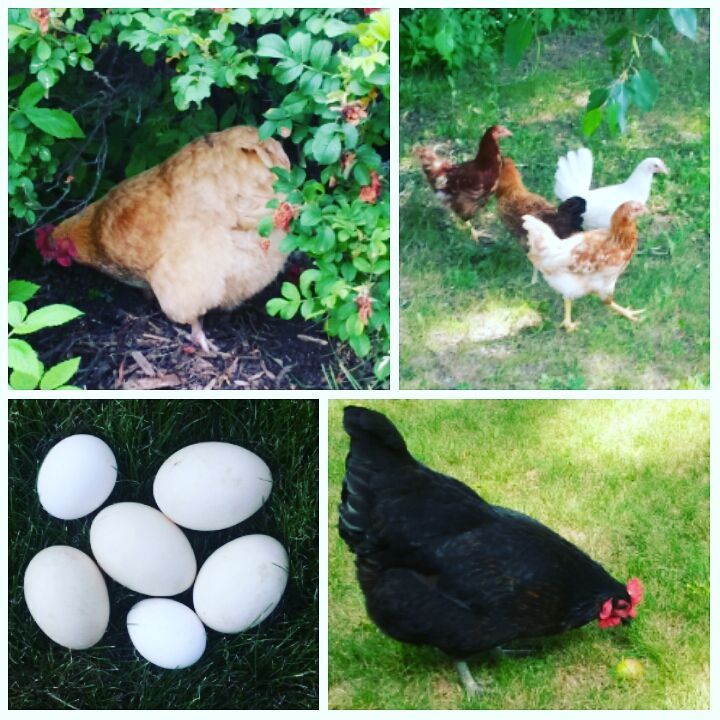I am so excited to hear so many people I know are considering backyard chickens. I mean, how can you resist those little puffs of happiness when you visit them at Tractor Supply or your local feed and hardware stores? I think most people are surprised to find out that backyard chickens don’t have to be a huge investment or a lot of work. You can decide for yourself how much you want to put into building or buying a coop and their care is generally pretty simple. I have put a list together of a few things everyone should know when they bring home their first chickens.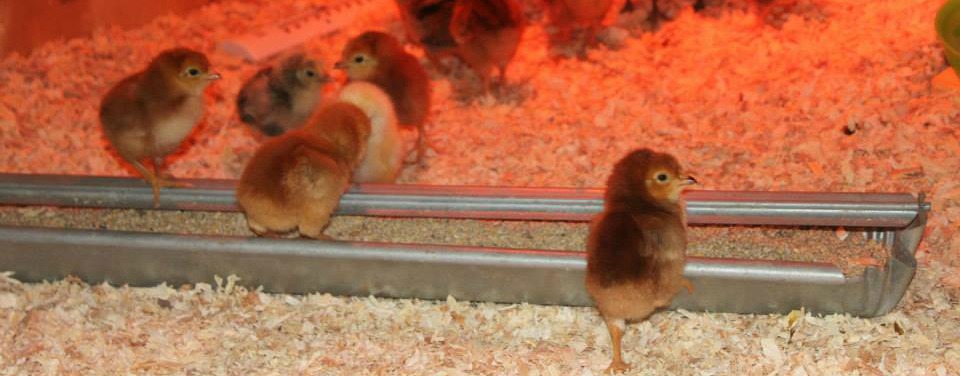
- You will need a good brooder. For some people, this is simply a plastic tub or even a bath tub. If you want to build a brooder that can be reused for years to come, check out our tutorial. The brooder needs dry pine shavings, a thermometer, feeder, water, and a heat source. It is best to have the heat source set up a day or two in advance so that you have a nice warm home for the chicks when you bring them home. The brooder should start at 90-95 degrees (F) and be reduced about 5 degrees a week (by raising the lamp) until the birds feather out. We find it best to put a block of wood in the bottom to hold the feed and water containers, as the little chicks like to kick the shavings into them.
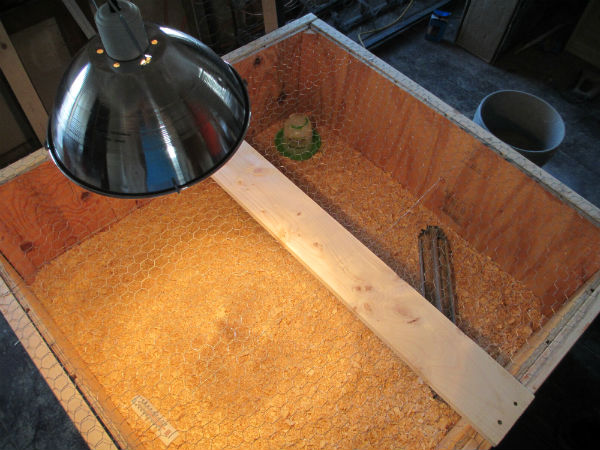
- For egg laying chickens, you should start your chickens on a chicken starter feed with a protein level between 10-15% for about 3 months. For months 3-5 a grower feed with a protein level around 15% is best. Layer feeds, which contain an increased level of calcium, should be fed to layers older than 18 weeks. The extra calcium can be harmful when the birds are younger, so it is important to wait until they reach the recommended age. So just remember: starter feed –> grower feed –> layer feed.
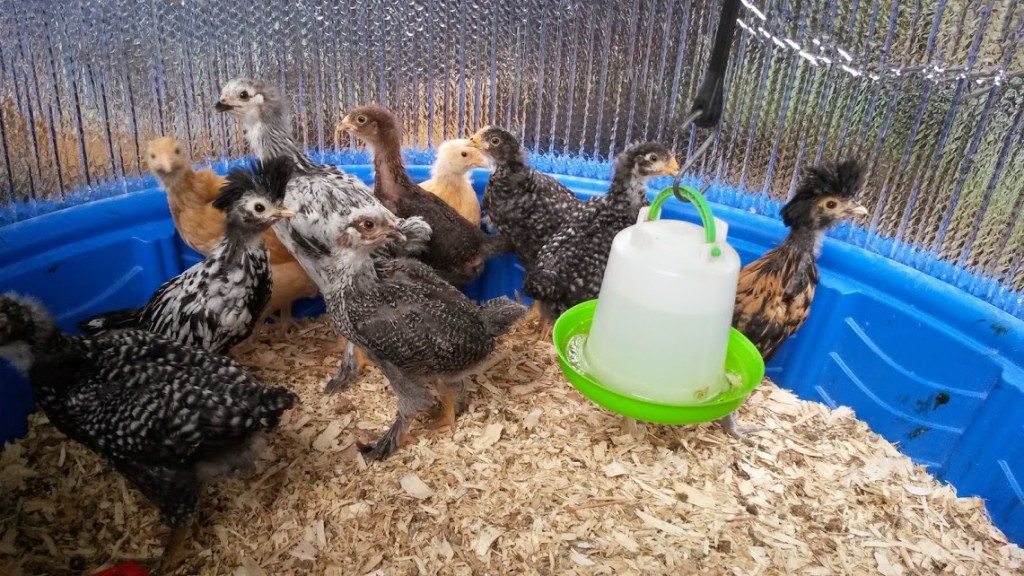
- Water should be available to chickens at all times. A small chicken waterer is perfect in the brooder, but a large one is more appropriate for the coop. If you live in a cold climate where it freezes often in the winter, I recommend just going ahead and buying a heated waterer. You don’t have to always have it plugged in and it is so useful in the winter.
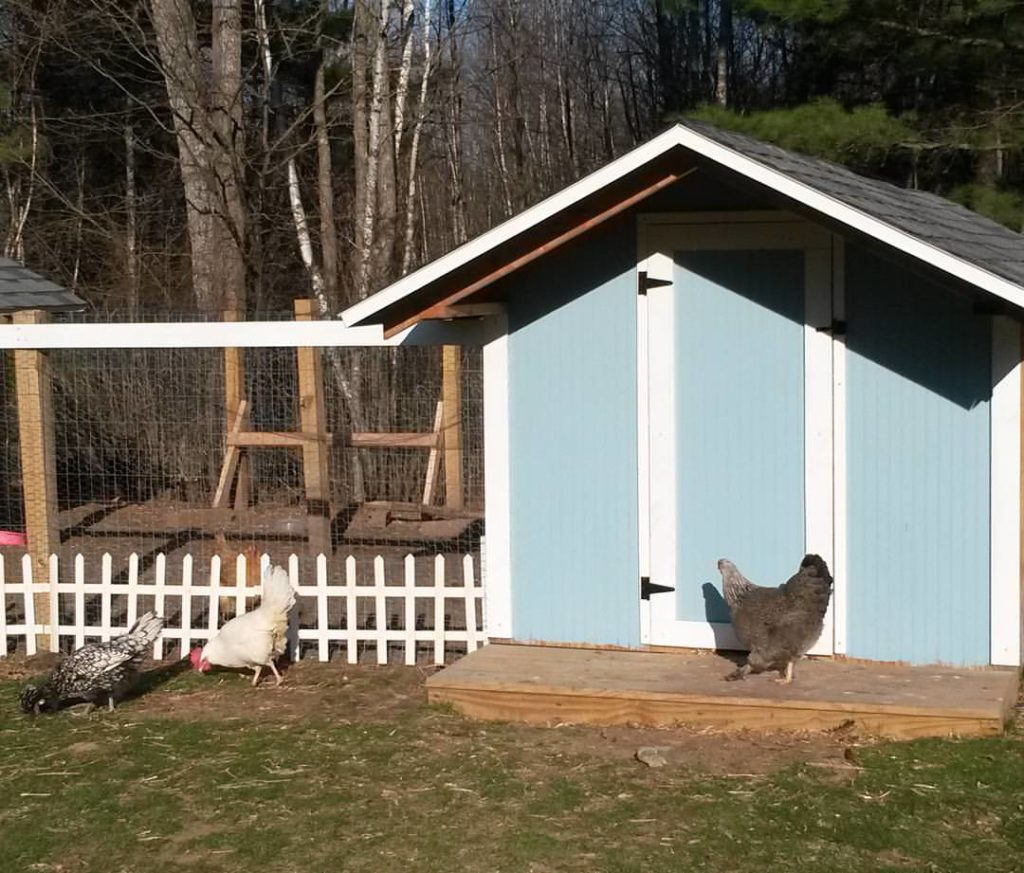
- You will need a coop and outdoor run for your chickens. You can buy a small coop (usually for about 4 birds) at your local feed store, or you can build one of your own. There are so many recommendations and plans online, but just remember a minimum of 3 sq ft per chicken in the coop, 10 sq ft per bird in the run, and 1 ft roosting space per chicken. The coop needs to be sheltered from the cold, but not airtight. Cleaning the coop is the biggest job and how often you do it is really up to you. We use the deep litter method, meaning we scoop out under the roosts 1-2 times per month and then we add more shavings and stir it in. We do a full coop cleaning 2-3 times a year. The run needs to be protected from predators (which will vary based on your location.) We recommend using hardware cloth as a fence and burying it 6-12 inches under ground to keep out predators that will dig. We are lucky that we have only lost chickens while free ranging and nothing has ever gotten into our coop. Our first coop was very large, because we wanted it to be multi-functional if the next owners didn’t want a chicken coop. You can read all about our first coop in this 4 part series.
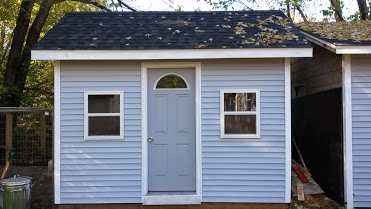
- It is a good idea to have a chicken first aid kit. We have had a couple of chickens with issues, such as bumble foot or sores from being picked on. While the issues don’t happen often, it is better to be prepared than to have to run out and buy supplies once you discover an issue. I recommend having gauze, vetricyn wound and skin care, stretchy bandage for wrapping, and rubber gloves. Sometimes when a chicken seems sick or lethargic all it takes is some water with electrolytes. Since I am not a veterinarian, I recommend doing some research or asking your local vet if you have any questions about chicken care or a specific sickness/injury.
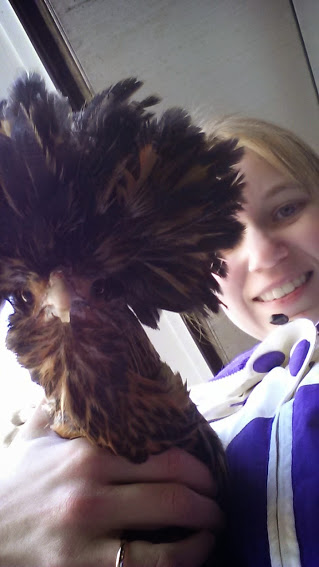
- After your chickens reach about 6 months old the hens will start laying eggs! You do not need a rooster for hens to lay eggs, and if you do have a rooster any fertilized eggs can be used just like any other egg, as long as you aren’t allowing your hens to become broody and sit on them. You can encourage them by making cozy nest boxes and using a wooden egg or golf ball in the boxes to make them see what it is for. I wrote a nest box tutorial a couple of years ago that I recommend checking out.
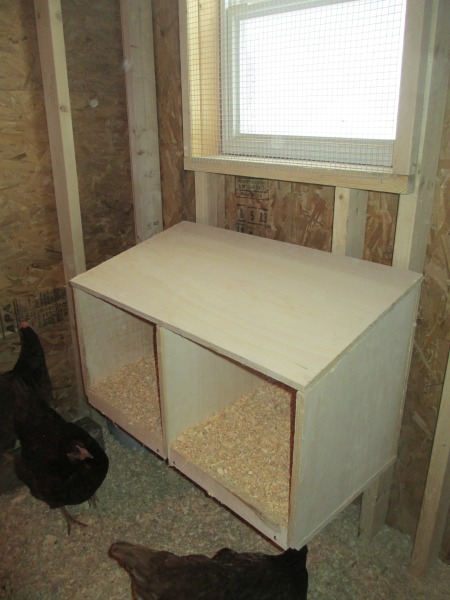
- Eggs can be stored with or without refrigeration. Eggs that have been cold or refrigerated should be kept cold, as temperature changes can cause them to spoil. If the eggs are fresh from the coop, feel free to keep them on the counter. If you are concerned about egg freshness, you can try the float test. Fresh eggs will sink. Eggs that are still ok, but should be used soon will stand on end. Eggs that have gone bad will float.

- Once you are settled with your chickens, get about 20 more. Then get ducks…and maybe a goat. Just trust me.
